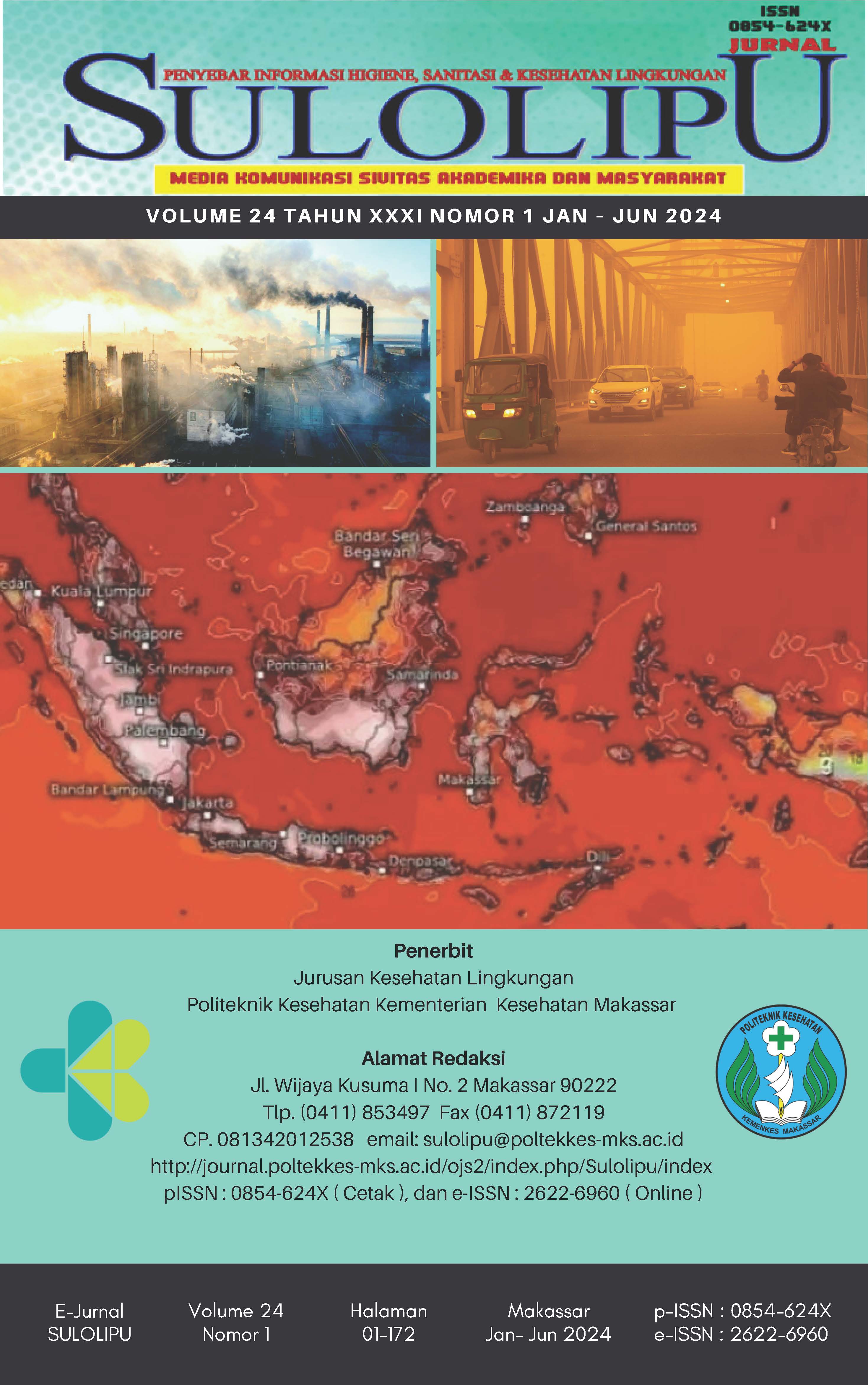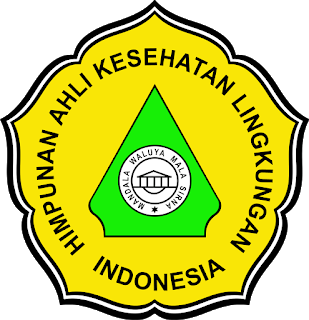Distribution of Dengue Fever Disease Based on Epidemiological Variables in Ende Regency
DOI:
https://doi.org/10.32382/sulo.v24i1.496Keywords:
-Abstract
Dengue Dengue Fever (DBD) is a public health problem in the world, has an impact on economic loss and continues to be a burden on the country. Events that continue to increase and expand in the last five years are the basis for further studies. The purpose of the research is to determine the distribution of dengue fever based on Epidemiological Variables in Ende Regency in 2018-2022. Research method: using secondary data is descriptive research to assess the spread of dengue cases based on the epidemiological variables of people, places, and times. The subject of the study was the number of dengue cases in 2018-2022 as many as 609 cases. Data collection using secondary data observation techniques. Data processing starts with editing, tabulating, serving, and data presentation.
Furthermore, it is analyzed in the form of frequency distribution and presented in the form of tables and graphs. Researchers emphasize the existence of research ethics, namely anonymity and confidentiality. Result: Dengue fever cases in Ende Regency in 2018-2022 attacked more men, namely 318 people (52.2%) and 219 women (47.8%); based on the distribution of wilayah, the most cases were in urban areas, the highest in ende City, then Onekore, Rukun lima, and Kota ratu. The surge in cases occurred in 2019 and 2020 due to the condition of the Covid 19 pandemic which has similarities in symptoms with dengue fever. Still, it decreased in 2021 and increased again in 2022, higher than the previous 5 years. Advice: more aimed at the Ende Regency Government to carry out various interventions by involving cross-sector roles and the active participation of the community in efforts to prevent and control dengue fever
References
Baitanu, J. Z., Masihin, L., Rustan, L. D., Siregar, D., & Aiba, S. (2022). Hubungan Antara Usia, Jenis Kelamin, Mobilitas, Dan Pengetahuan Dengan Kejadian Demam Berdarah Dengue Di Wulauan, Kabupaten Minahasa. Malahayati Nursing Journal, 4(5)
BPS Kabupaten Ende. (2023). Kabupaten Ende Dalam Angka. BPS Kabupaten Ende.
Dinas Kesehatan Kabupaten Ende. (2022). Profil Kesehata Kabupaten Ende. Dinas kesehatan Kabupaten Ende NTT.
Dirjen P2P. (2017). Pedoman Pencegahan dan Pengendalian DBD di Indonesia. In Kemenkes RI, Jakarta.
Dirjen P2P. (2021). Strategi Nasional Penanggulangan Dengue 2021-2025. In Kemenkes, Jakarta:
Eka, A., Putri, L., Subhi, M., & Syafitri, D. P. (2023). Gambaran Kasus Demam Berdarah Dengue Puskesmas X Kota Malang Tahun 2019-2022. Media Husada Journal of Environmental Health Volume 3, Nomor 1, Desember 2023, 3, 12–18.
Grant, W. B., Lahore, H., McDonnell, S. L., Baggerly, C. A., French, C. B., Aliano, J. L., & Bhattoa, H. P. (2020). Evidence that vitamin d supplementation could reduce risk of influenza and covid-19 infections and deaths. In Nutrients (Vol. 12, Issue 4,
Irma, I., & Masluhiya AF, S. (2021). Trend Penyakit Demam Berdarah Dengue (DBD) di Sulawesi Tenggara Berbasis Ukuran Epidemiologi. JUMANTIK (Jurnal Ilmiah Penelitian Kesehatan), 6(1), 70.
Jumaiah, J., Solikhah, S., & Wahyuni Sukesi, T. (2023). Tren Kasus Demam Berdarah di Puskesmas Sepaso Kecamatan Bengalon Tahun 2012-2022. Media Publikasi Promosi Kesehatan Indonesia (MPPKI), 6(12), 2572–2578.
Kasman, K., & Ishak, N. I. (2018). Analisis Penyebaran Penyakit Demam Berdarah Dengue Di Kota Banjarmasin Tahun 2012-2016. MPPKI (Media Publikasi Promosi Kesehatan Indonesia): The Indonesian Journal of Health Promotion, 1(2).
Kemenkes RI. (2022). Profil Kesehatan Indonesia. In Pusdatin.Kemenkes.Go.Id. Kementerian Kesehatan RI.
Kemenkes RI. (2023). Laporan Tahunan 2022 Demam Berdarah Dengue. In Kemenkes RI.
Novrita Bibah, Rini Mutahar, & Purnamasari Indah. (2017). Analisis Faktor Risiko Kejadian Demam Berdarah Dengue Di Wilayah Kerja Puskesmas Celikah Kabupaten Ogan Komering Ilir. Jurnal Ilmu Kesehatan Masyarakat, 08(01), 28.
Pertiwi, P. I., & Anwar, M. C. (2018). Gambaran Epidemiologi Kejadian Penyakit Demam Berdarah Dengue Di Kecamatan Buah Batu Kota Bandung Tahun 2012 - 2016. Buletin Keslingmas, 37(3).
Qi, X., Wang, Y., Li, Y., Meng, Y., Chen, Q., Ma, J., & Gao, G. F. (2015). The Effects of Socioeconomic and Environmental Factors on the Incidence of Dengue Fever in the Pearl River Delta, China, 2013. PLoS Neglected Tropical Diseases, 9(10).
Ribek, I. N., Mega Asrini, K., Sulisnadewi, N. L. K., & Labir, I. K. (2021). Perilaku Kesehatan Anak Sekolah Dasar Memiliki Kerentanan Terjadinya Demam Berdarah Dengue. Jurnal Gema Keperawatan, 14(2), 174–184.
Ridwan, W., Ruliansyah, A., Yanuar, F., & Jajang, A. (2021). Pengembangan Sistem Informasi Kesehatan Demam Berdarah Dengue Dengan Deteksi Dini Di Kabupaten Bandung. Spirakel, 12(1), 1–14.
Sari, M. P. (2023). Metode Penelitian Epidemiologi (Issue December). CV. Media Sains Indonesia.
Siswanto, & Usnawati. (2019). Epidemiologi Demam Berdarah Dengue. In Mulawarman University Press.
Suryani, E. T. (2018). Implementasi Model Juru Pemantau Jentik. Jurnal Vektor Penyakit, 12(2), 67–76.
Sutriyawan, Agung, D. (2020). Determinan Epidemiologi Demam Berdarah Dengue (DBD) Di Daerah Perkotaan: Studi Retrospektif. Journal of Nursing and Public Health, 8(2), 1–9.
Tokan, P.K., & K. O. (2023). Community Empowerment As An Effort To Prevent Dengue Fever In Gheoghoma Village. Jurnal Sulolipu : Media Komunikasi Sivitas Akademika Dan Masyarakat Vol.23 No.2 2023, 23(2), 371–381.
Tokan, P. K., & Artama, S. (2022). Efektifitas Pendidikan Kesehatan Demam Berdarah Dengue Terhadap Pengetahuan, Sikap Dan Keterampilan Jumantik Sekolah Di Sekolah Dasar Inpres Watujara Kabupaten Ende. Sulolipu: Media Komunikasi Sivitas Akademika Dan Masyarakat, 22(2), 350.
Zuchri Abdussamad. (2021). Metoda Peneitian Kualitatif. In CV. Syakir Media Press.
Zulfa, R., & Fauziah, M. (2020). Analisis Spasial Kejadian Demam Berdarah Dengue Di Indonesia memiliki karakteristik. Kajian Dan Pengembangan Kesehatan Masyarakat Vol. 01 Nomor 01 Agustus 2020, 01, 74–98.
Downloads
Published
How to Cite
Issue
Section
PDF (Bahasa Indonesia) downloaded: 2756



















